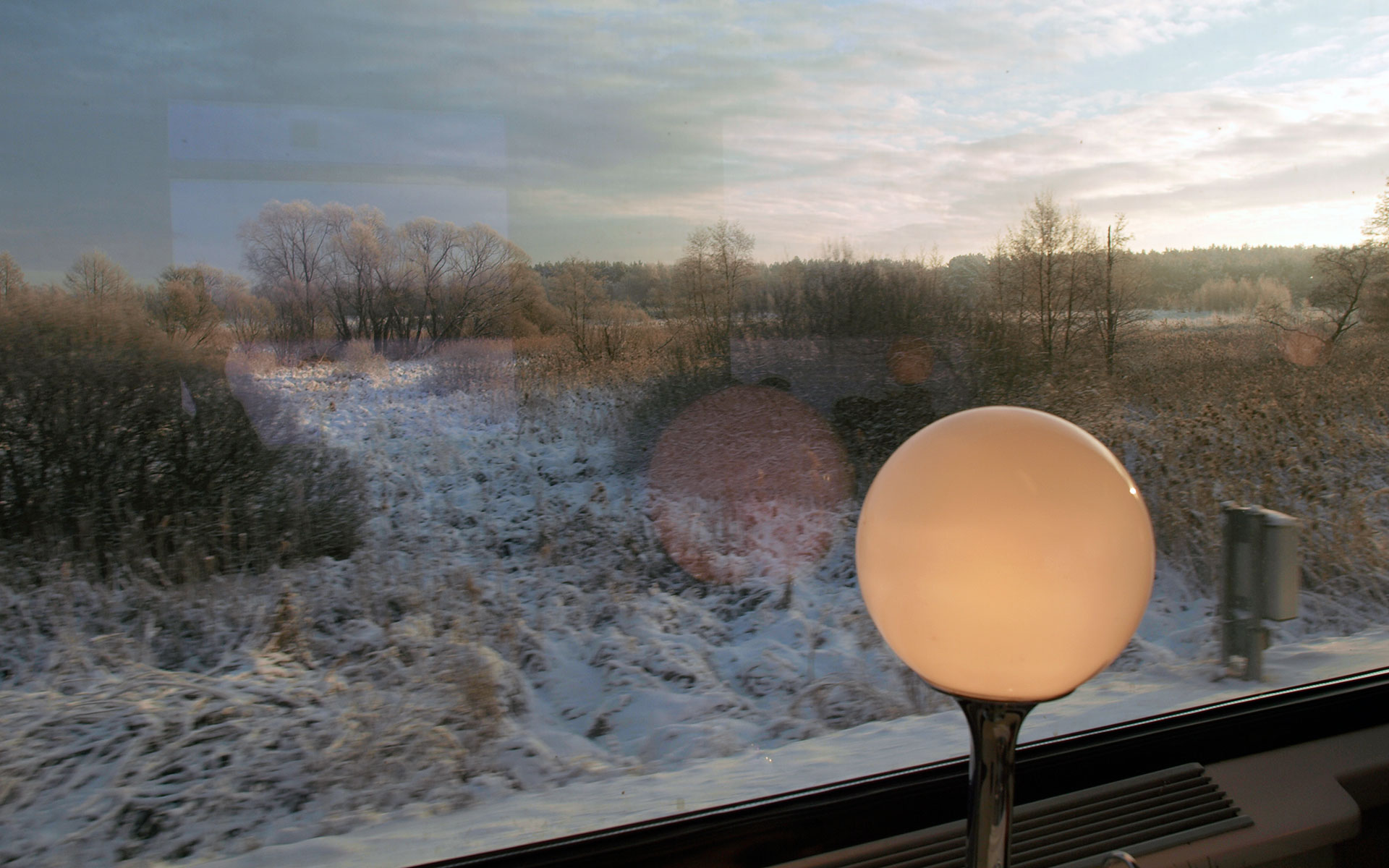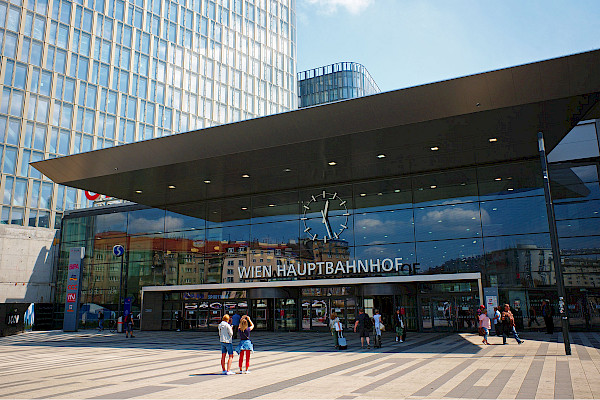The Train to Wherever
Glimpses of the Berlin hinterland from the train (photo © hidden europe).
Sometimes, if I am in search of inspiration, I take the train to nowhere in particular. At the station I buy a regional day pass for the entire network around Berlin. I'll often plan a circular journey if I can make the timetables fit. If not, I’m more than happy to simply go there and back again. And where is there? It doesn’t matter. They say the journey is the destination, and this is certainly true when you end up back where you started.
The station on a winter morning is cold, with crisp air and a low sun creating long shadows on the platform. There are very few travellers about today and there is a period of about ten minutes during which no trains arrive or depart from any of the many platforms. It’s as if they are waiting for us to make a decision, to cast our eyes down the list of upcoming trains before agreeing on which one we’re going to take.
The first stage of the journey is through the city, the train raised high above the streets, offering a view across to balconies where smokers shiver as they puff away. Now we look down to the basketball courts where a man practises his free throws in a thick pair of woollen gloves. The train offers city views like no other; of the houseboats on the river, half-hidden beneath the drooping branches of weeping willow trees; the scrap dealers sorting a newly arrived lorry load behind high metal fences; the graffiti painted on the gable end of houses that look like they were shorn to make way for the railway tracks, a call to support the local football team alongside tagged names and coded messages for those in the know.
The city centre gives way to the edgelands, the in-between places of the city’s periphery. Garages and storage halls, triangles of scruffy bushes and elegant silver birch trees. A riding stable, where horses trot in a muddy circle between the motorway and the tracks. Allotment gardens and weekend cottages, flags flying above bonfires of burning leaves.
I scribble notes in my book as this all passes by beyond the window. So many scenes, snapshots of lives lived close to the railway tracks. Every one could be the start of a story. You don’t need to go far for a train ride to trigger the imagination.
We’ve left the city behind now. At level crossings, cars back up in a countryside traffic jam. A woman has climbed out of her car to smoke. The man at the front has his newspaper unfurled across his steering wheel and dashboard. How long have they been waiting? How many trains have passed? In the forest, the trees flickering by as the train picks up speed, weekend cyclists ride the rutted tracks, their winter lycra bright against the dull browns and greens all around them.
The train stops at a rural station. A red-brick building, some new fencing, and a view across the fields. No-one gets off. No-one gets on. The solitary station staff member waves to our conductor, watering can in hand, as if the hourly trains are a distraction from his more important duty, which is to tend the neat flower beds that stand at intervals along the platform.
The view has opened up now, the patches of woodland short interludes between long stretches where the train passes through farmland. Clusters of reeds betray the presence of water, a stagnant pond or a patch of marshland. Hunters’ pulpits look out from the edge of the field to where the deer have been known to break cover. A rough-legged buzzard, south for the winter, hovers above it all, keeping an eye out for anything that might have been disturbed by the passing train.
We’re almost there. The place we picked because the journey time fitted to make sure we will be back home before it’s dark. On the edge of the small town we chase the sun as it reflects from one apartment window and then another, moving with the speed of the train. The train’s shadow is racing us too, through back gardens of detached houses, a landscape of trampolines and polytunnels, barbecues tucked in for the winter and Tibetan prayer flags, hanging between the washing line and the conservatory.
In five minutes we will get off the train, cross the platform, and wait fifteen minutes for the train to take us home. It might seem odd, but sometimes all we need to stimulate the imagination is just some movement. It doesn’t really matter where we are going, just that we are going. On the way home, the view will be similar but different. Every journey brings its own, gentle highlights. More notes scribbled in the book. More stories, each one waiting to be told. On the train to wherever, the possibilities are endless.








About The Author
Paul Scraton
Paul Scraton was born in Lancashire and has lived in Berlin since 2001. A writer with a particular interest in landscape, memory and place, he is the editor-in-chief of Elsewhere: A Journal of Place. He is the author of a number of books including The Idea of a River: Walking out of Berlin (Readux, 2015) and Ghosts on the Shore: Travels along Germany's Baltic coast (Influx, 2017). His debut novel Built on Sand was published by Influx in 2019. Find out more about Paul on his website.